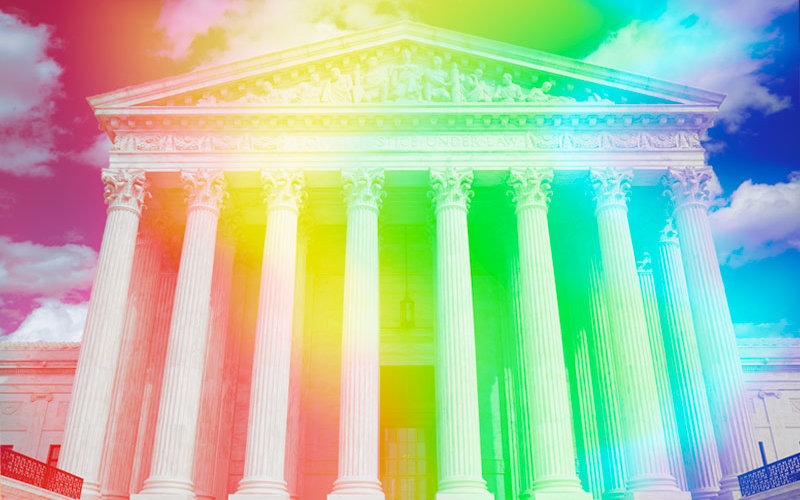
“It is impossible to discriminate against a person for being homosexual or transgender without discriminating against that individual based on sex.” — Justice Neil Gorsuch
The U.S. Supreme Court’s recent ruling that the Civil Rights Act protects gay, lesbian and transgender employees from discrimination based on sex was a cause for celebration by Cal State Fullerton’s Shaun Pichler — on both a personal and professional level.
The chair and professor of management, who is openly gay, is not only a strong advocate for the rights of underrepresented populations, but has focused his research on diversity in human resources.
The reasoning underlying the court’s decision was an affirmation of his work. Not only was it in line with his research findings, but his work was cited multiple times in amicus briefs — documents filed by parties beyond the litigants to provide additional information that the court might consider — that were submitted to the Supreme Court for this decision.
What does the ruling mean for LGBT workers and companies?
This ruling is pivotal and monumental — it gives LGBT workers recourse when they’ve been discriminated against based on their sexual orientation or gender identity.
The decision is a win for companies too, as they now have very clear guidelines on what’s acceptable or not when it comes to sexual orientation and gender identity discrimination.
On a more personal level, with newfound federal employment protections, LGBT workers will hopefully feel more at ease not only disclosing their minority status, but being comfortable in their own skin at work. For LGBT workers who are fortunate enough to be employed by organizations that truly embrace diversity, they have the benefit of feeling more supported, less stressed and overall more psychologically healthy from their work.
In my study, “Heterosexism and Work-family Concerns,” I found that the feelings of support that LGBT workers experience from inclusive work organizations does spill over into the family domain in terms of more healthy relationships with romantic partners and spouses, children and other family members.
How does your research support the court’s ruling?
In “Heterosexism in Employment Decisions: The Role of Job Misfit,” my colleagues and I tested the idea that job applicants would be discriminated against based on their perceived lack of fit with the gendered nature of jobs.
Undergraduate students and human resources professionals were asked about hiring a fictitious job applicant as a registered nurse (stereotypically feminine job) or a sales manager (masculine job). The candidates’ resumes were identical, except for their names (male or female) and leadership role (student government president or LGBT association president).
Both groups made selections based on the lack of fit between the perceived gender role stereotypes and the jobs, preferring gay men and heterosexual women for nursing and heterosexual men and lesbian women for sales.
This was the first known study to show that people are discriminated against based on how their sex and sexual orientation interact to cause applicants to be perceived as unqualified for jobs based on how their traits are perceived (i.e., as masculine or feminine). These findings are very much in line with the reasoning of the majority opinion.
What’s next for human resources and management in this area?
While this is a watershed moment for the LGBT community and for civil rights, there is much more that needs to be done. So long as there are anti-gay and anti-trans attitudes among decision makers in organizations, discrimination will happen. Part of that change involves how LGBT people are viewed and portrayed such as in film, television, the media and by society in general — both in the United States and around the world.
It’s also important to note that many companies’ diversity and anti-discrimination training does not include sexual orientation or gender identity issues. An important step forward is for companies to be more open about and inclusive of sexual orientation and gender identity diversity — and to train managers to not make discriminatory decisions based on these dimensions of diversity.
Contact: Karen Lindell, klindell@fullerton.edu